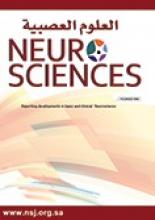Abstract
OBJECTIVE: To investigate muscle activities during locking-unlocking movements.
METHODS: Thirty right-handed healthy volunteers, aged between 18-23 years, without any orthopedic or neurological disorders participated in the study. We choose the clavicular part of the deltoid muscle, biceps brachii, pronator teres, extensor digitorum, pronator quadratus, first dorsal interosseous muscles and muscles of the thenar eminence for the study. We adjusted the height of the lock at 80 cm, 100 cm and 120 cm from the ground surface. We recorded the activities of the chosen muscles electromyographically using surface electrodes. We obtained the electromyography recordings between September 2000-January 2001 in the Electrophysiology Laboratory of Gazi University School of Medicine, Department of Physical Medicine and Rehabilitation.
RESULTS: There was a statistically significant increase in area (mVms) and amplitude (uV) values obtained from the EMG recordings of the clavicular part of the deltoid muscle and biceps brachii during locking and unlocking movements as the height of the lock increased (p<0.05). There was no statistically significant difference in the activities of the other muscles chosen for the study during locking and unlocking movements with the increase in height of the lock (p>0.05). When we considered the total activity recorded from the muscles chosen for this study, there was a statistically significant difference in the area values with the increase in height of the lock during locking and unlocking movements (p<0.05). This means that the activity recorded from the entire upper limb increased with the increase of the height.
CONCLUSION: The recorded muscle activity obtained with the lock at 80 cm from the ground surface was lower compared with the activities recorded at 100 cm and 120 cm. For this reason, we suggest that it could be better to locate the lock at 80 cm from the ground surface.
- Copyright: © Neurosciences
Neurosciences is an Open Access journal and articles published are distributed under the terms of the Creative Commons Attribution-NonCommercial License (CC BY-NC). Readers may copy, distribute, and display the work for non-commercial purposes with the proper citation of the original work.






